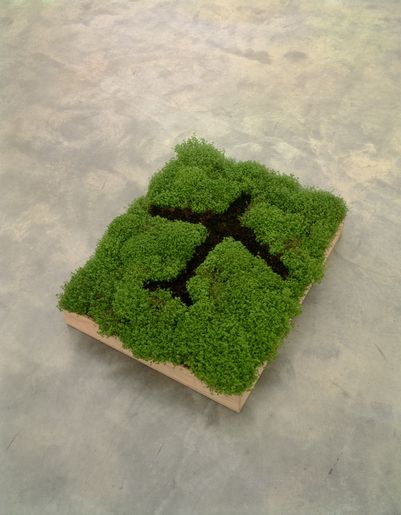B-52 in Baby’s Tears

Martha Rosler
B-52 in Baby’s Tears, 1972
Installation Plants (Baby’s Tears, lat. Helxine Soleirolii), earth, wooden crate 76.2 x 61 x 10 cm
GF0002183.00.0-2000
Artwork text
A B-52 bomber “casts” a “shadow” on a shallow box containing the tender “helxine soleirolii” plant, which, significantly, is called “baby’s tears” in America. This plant, with its strings of tiny, tender, rounded leaves is used as decoration in window boxes and on garden paths in warm locations. The size of the wooden box is that of a “garden flat” as such units are called in the U.S. B-52 bombers were favored by the U.S. for dropping bombs on Vietnamese villages and for exfoliating the Vietnamese forests with napalm. This was to prevent the Viet Cong from hiding there. The image of the shadow of these huge jet aircraft flying over the rural terrain of Vietnam imprinted itself on our memories and is one of the symbols of this war which led to a huge anti-war movement that included many artists. In her well-known series of photo montages entitled Bringing the War Home (1967-72), Rosler inserted war scenes from pictorial news magazines into pictures of interiors from home decorating magazines, and here again the artist confronts us with a montage of real elements from everyday private life and well-known images from the war. In this way Rosler comments on the media reports on the war, which bring images of death and destruction into every home day by day. There is a poignant reminder of the life on the ground—and a reminder as well, through the title of the plant, with its tiny, delicate elements, that the innocent are casually killed in the bombing war. (Sabine Breitwieser/Martha Rosler)